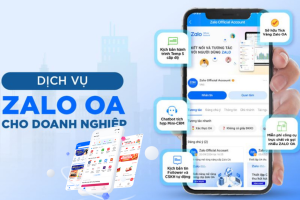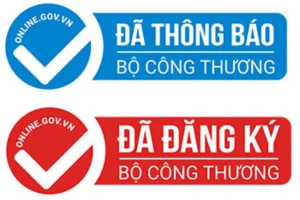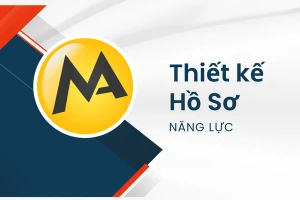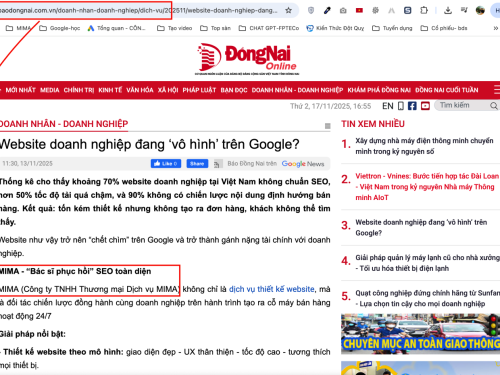Website Design for Marketing & Digital Training – Optimize Online Students – Standard for Digital Age Education Brands
The Trend of Online Learning and the Need for a Professional Training Website
Marketing and digital are becoming mandatory skills in the technology age, leading to strong growth in training centers in this field. The rise of online learning, MOOC platforms, short courses combined with international certificates, etc., are causing a surge in learning demand, while also creating significant competitive pressure among training providers.
In a vibrant training environment, a professional website plays a central role in operations, communication, class organization, enrollment, and student retention. Especially with the unique characteristic of students being young people, tech-savvy individuals with the habit of researching, registering, and studying entirely online, the website not only needs to exist but also needs to be good and strong enough to compete.

What Role Does a Marketing & Digital Training Website Play?
Is the Face of the Educational Brand
For a field of study directly related to digital and e-commerce, if a center does not have an optimized website with a modern interface and good content, it is a major drawback in the eyes of students.
The Website will show:
- Technological thinking
- Thoroughness in operation
- Level of expertise, academic
- The reputation of the training unit
Is an Effective Enrollment Tool
This is where students will:
- Find course information
- Compare learning paths, lecturers
- View reviews from former students
Register for a Trial Class or Pay Online
A website with a logical structure, clear information, prominent CTAs, and fast loading speed will significantly increase the conversion of potential students into actual students.
- Is a platform for organizing classes
- Integrating LMS (Learning Management System), the website can organize:
- Online courses
- Blended classes
- Assigning homework, grading, testing
- Tracking the learning progress of each student
This helps the center expand its scale without needing to invest in additional facilities.

Essential Features in a Marketing & Digital Training Website
Center Introduction Page
- Vision, mission
- Founding team, lecturers
- Development history, quality certifications
- Business partnerships and affiliations
Course List
- Detailed roadmap for each course: from basic to advanced
- Study time, study format
- Tuition fees, promotions
- Learning outcomes, skills acquired
Learn Online Directly on the Website
- High-quality video lectures
- Slides, downloadable materials
- Quizzes, practical exercises
- Grading system, certificate issuance
Online Course Registration
- Simple forms
- Select a course, select a time
- Connect via Zalo/Messenger to receive consultation
- Online payment integration
Knowledge Sharing Blog
- Content about digital marketing
- Tips for quickly learning SEO, advertising, email, automation... skills
- Market insights, technology updates
Student Feedback – Course Reviews
- Display real feedback
- Video testimonials
- Links to review pages on Google, Facebook
Contact, Support
- Quick chat button
- Clearly displayed hotline
- Direct contact form
- Address, map, social networks

Interface Requirements for a Modern Training Website
Minimalist, Intuitive Interface
Digital industry students love logic and easy viewing. The interface needs:
- Clear fonts
- Grid layout, content area division
- Distinct brand colors, not too flashy
Designed According to User Behavior
- Smooth phone browsing
- Clear CTAs: Register – Try a Class – View Course Details
- Not cluttered, prioritize UX over effects
Responsive to All Devices
Most students access via phone, so the website needs:
- Load quickly under three seconds
- Lightweight mobile interface
- Prominent call or consultation buttons

Benefits for Centers with a Professional Website
Increase Conversion Rate
- If website visitors see complete, easy-to-understand course information, clear prices, and good reviews, their likelihood of registering for the course will be very high.
Optimize Advertising Costs
- A SEO-standard website can bring a stable amount of free traffic from Google, reducing advertising costs while still attracting students steadily.
Build a Solid Academic Image
- The website is the place to share resources, blogs, and professional videos… contributing to building expert status in the field of marketing and digital training.
Integrate Nationwide Training, Beyond Borders
- With the ability to teach online and issue digital certificates, you can attract students everywhere, including overseas Vietnamese or foreigners learning Vietnamese.
Software to Integrate into a Digital Training Website
- LMS: learning management system (LearnDash, Moodle, Tutor LMS...)
- CRM: student management, automated care (HubSpot, Zoho, Mautic...)
- Payment Gateway: VNPAY, Momo, Stripe, Paypal payments
- Live chat: Zalo, Facebook Messenger integration
- Email automation: send materials, reminders, alumni care

Website Design Process for Marketing – Digital Training Centers
Preparation Step
- Analyze target students
- Set goals: teach online or just introduce courses?
- Estimate the number of courses and training programs
Interface Design Step
- Choose a design style according to brand identity
- Prioritize UX, UI according to young people's behavior
- Take photos/design quality course banners
Programming and Integration Step
- Install online learning system if needed
- Integrate live chat, email, CRM
- Build a tuition payment function
Operation and Maintenance Step
- Guide to updating courses
- Update SEO content: blog, landing page
- Track conversions via Google Analytics
Frequently Asked Questions
Does the Website Need Online Learning Integration?
- If the center intends to expand nationwide or does not have enough facilities, it should be integrated from the beginning. You can teach via Zoom but manage students via the website to save costs and create a professional experience.
Does Each Course Need a Separate Landing Page?
- It is highly recommended. A separate landing page helps optimize advertising, accurately measure student behavior, increase conversion rates, and is convenient when running Facebook Ads, Google Ads.
How Often Should Content Be Updated?
- You should write a blog weekly, update courses monthly, and add student feedback regularly. This helps keep the website "fresh" and improves SEO.
Do You Need Complex Design Applications?
- Not necessarily. The important thing is that the interface is neat, clear, and logical. You can start with a simple system and then upgrade gradually.
Current Trends in Digital Training Website Design
Micro Learning – Short Learning by Module
- Each lesson is divided into clips of a few minutes, attached materials, and quick quizzes. The website needs to support breaking down lessons, easily accessible according to needs.
Gamification – Learning with Points, Badges
- Integrating a scoring system, awarding prizes helps increase excitement when learning online. The website needs a flexible platform to support this model.
Marketing Automation
- Automatically send learning materials, advice, surveys after class. Automatically send certificates, invite reviews. The website is the center for connecting email marketing and CRM.
Multi-Platform Training
- The website needs to connect learning materials with TikTok, YouTube, Fanpage, Instagram… to help spread the brand and optimize conversions from these channels.
Contact information for service:
MIMA TRADING SERVICE COMPANY LIMITED
Tax code: 0318672839
Address: Hoc Mon, Ho Chi Minh City
Hotline/Zalo: 0909 035 333
Email: info@mimadigi.com


























Share your review